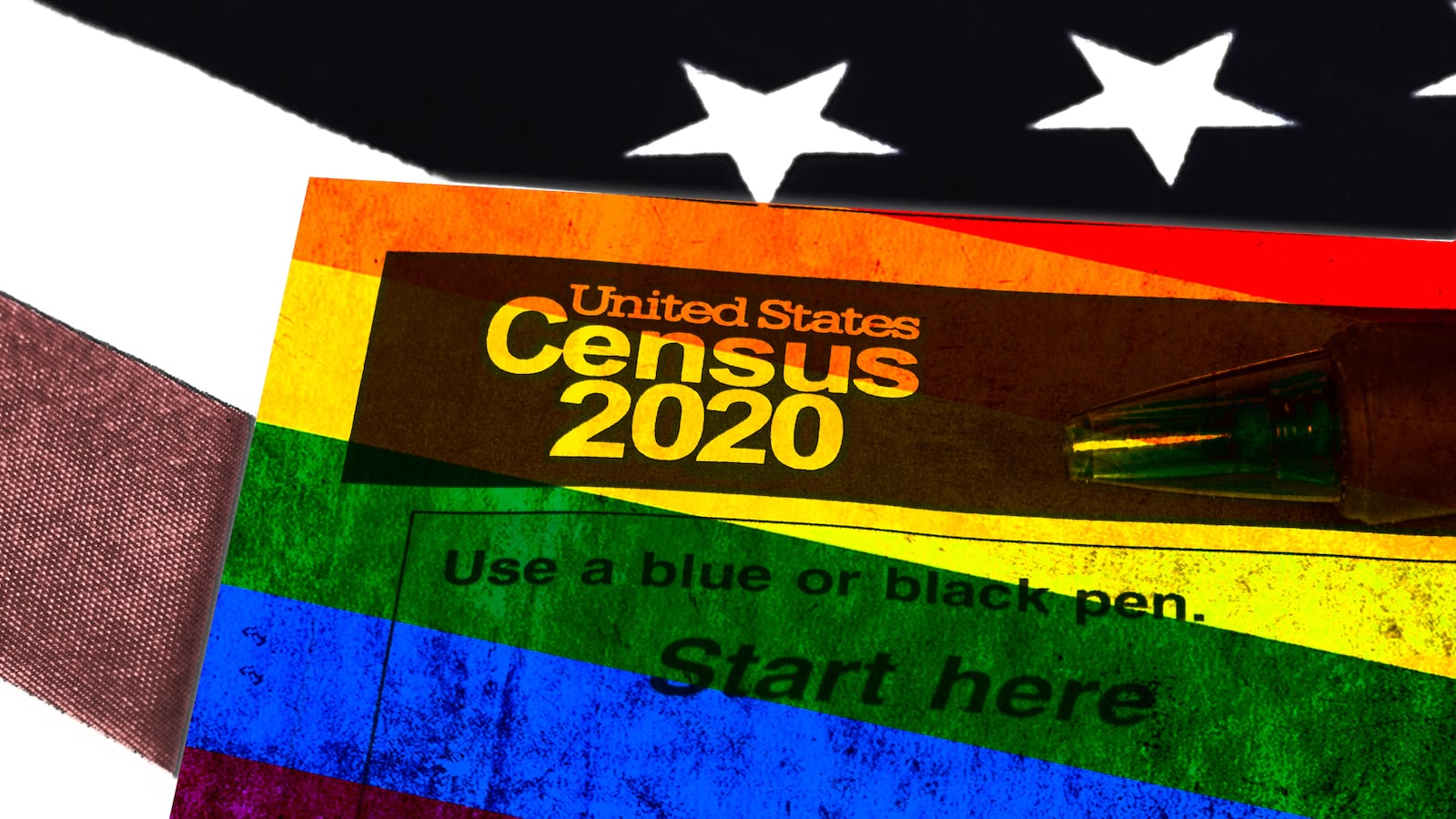Late last week, as NPR reported, the U.S. Census Bureau revealed in a congressional report that they will create a clear distinction on the 2020 Census between opposite-sex partners and same-sex partners.
But when it comes to LGBT inclusion on the Census and other federal surveys, that move appears to be the very least the governmental agency can do.
Although gaining a more accurate estimate of the number of same-sex couples will be an important milestone for both research and policymaking, the 2020 Census will still leave out most bisexual people, unpartnered gay men and lesbians, and transgender people—or, in other words, the vast majority of the LGBT community.
“Bittersweet,” is how Laura Durso, an LGBT researcher and the vice president of the LGBT Research and Communications Project at the Center for American Progress, described the Census Bureau’s announcement.
“It’s a good thing that we are now going to improve the way in which we ask people about their relationships, and whether they’re married, and to whom they’re married,” she told The Daily Beast. “And then, of course, that comes with real disappointment that we are still lacking questions about sexual orientation and gender identity that would let us see the full spectrum of the LGBT community.”
Questions about sexual orientation and gender identity made a brief appearance on a 2020 Census proposal last March, shortly after President Trump took office.
But, as the Associated Press reported, the Census Bureau quickly withdrew the questions, saying that the document had “inadvertently listed” them. The withdrawal dashed the hopes of Durso and other advocates, who wanted to see more accurate federal data collection so that researchers and public policy makers could better serve the LGBT community.
Indeed, as The Daily Beast and other outlets have previously noted, we still have no way of knowing exactly how many LGBT people are in the country, relying instead on estimates derived from various federal surveys.
As it stands, researchers believe that LGBT people comprise about four percent of the population, of which the slight majority are bisexual.
But as demographer Gary Gates previously told The Daily Beast, that estimate is still incomplete and it could one day prove to be “close to 10 percent”—an unsubstantiated figure once proposed by mid-century sexologist Alfred Kinsey— as younger generations come out of the closet.
The same-sex couple question on the 2020 Census, while important, will not even come close to clarifying this figure.
Questions about relationship status won’t capture gender identity, thereby omitting transgender people. And the lack of a distinct question about sexual orientation will also obscure the existence of bisexual people, most of whom find committed relationships with opposite-sex partners, according to the Pew Research Center.
“If you’re a bisexual person and you’re in a different-sex relationship, we’ve lost you entirely,” Durso explained, referring to data collection through the 2020 Census, adding that “even if you’re in a same-sex couple, we don’t know, for example, whether a woman identifies as lesbian, bisexual, queer, or something else entirely.”
“Knowing same-sex couples tells us something but it doesn’t tell us everything about all of the range of sexual orientation identities,” she noted.
Indeed, researchers like Durso want to know much more than the raw total of LGBT Americans, because the people represented by each of the letters in that acronym have different needs.
Bisexual people, for example, tend to have worse mental health outcomes than gay and lesbian peers due to the heightened stigma against bisexual identity. And as the past year and a half has proved, we still lack hard data on the numbers of people that targeted anti-transgender initiatives—like the Trump administration’s rollback of Obama-era school guidance or the more recent transgender troop ban—will affect.
Data from the 2020 Census will tell us how many people are in same-sex partnerships and marriages—a fraction of the LGBT community with an unknown denominator—and that’s about it. Still, says Durso, that’s no small feat given how spotty this data has been in the past.
“It’s a good step and a long time coming,” she told The Daily Beast, noting that although the Census has asked about unmarried partners since 1990, the lack of a distinct same-sex couple option left more room for human error.
Because some percentage of people incorrectly mark their own gender, Durso explained, “a lot of different-sex couples were incorrectly classified as same-sex couples and that’s not good for anyone.”
In fact, as Pew noted in 2015, the Census Bureau had to revise an initial estimate of 252,000 same-sex marriages down to the 170,000 range due to various inaccuracies.
Having a clearer estimate of that number—especially in 2020, which will mark five years since the nationwide legalization of same-sex marriage—will prove vital to policy makers and advocates who work on LGBT-related issues like adoption, childrearing, and income inequality.
Indeed, Durso suspects that one of the main reasons the relationship question will appear on the 2020 Census is because of the 2015 Obergefell v. Hodges decision, and the momentum that it put behind pre-existing efforts to pursue data collection on same-sex couples.
By contrast, Durso noted, “with the sexual orientation and gender identity questions, because they really hadn’t started too far down the road, political ideology was the thing that was able to stop them.”
Political ideology, Durso added, also appears to be behind the decision, revealed last week, to re-introduce a citizenship question on the 2020 Census some 70 years after it was last asked.
But although she is dismayed by the inclusion of the citizenship question and the omission of questions about sexual orientation and gender identity, Durso hopes that the same-sex relationship checkbox will be a step toward a more inclusive Census.
“It provides an entry point for people who might not understand what sexual orientation is or who the LGBTQ community is,” she said. “Even with these limitations, you can at least open the door to those kinds of conversations.”






